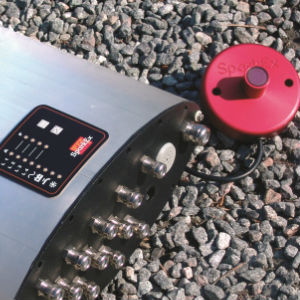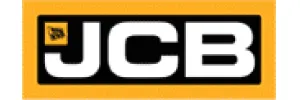News & Insights
Read the latest news from us and our clients across the globe

Posted on 11 April 2017 by Ceris Burns
Strategies for explosion protection in feed processing
Mark Shannon from BS&B Safety Systems explains how to avoid basic mistakes in explosion protection installation for your factory

Destructive dust explosions have been recorded for decades across process industries. In the animal feed industry, the risk of spark ignition tends to happen during the pelletising of combustible organic materials which involves grinding and drying processes. Pellet presses are a high risk source of ignition, due to friction and high running temperatures of machinery. If sparks are created, they can spread throughout the process machinery to silos and bins, where any accumulated or suspended feed dust is waiting fuel to start an explosion.
The other significant risk is found during the drying process of organic feed materials. Any accumulation of dust particles in the dryer when exposed to continuous levels of heat in the system, are prone to ignition. Once ignition occurs, the propagation of the flame through suspended feed dust can cause a rapid rise in pressure; the result can be an explosion of notable size.
Without adequate controls and safety measures, feed dust explosions can cause tremendous damage. Even though owners are making the effort to comply with required regulations such as ATEX and DSEAR, the execution of preventive measures is not always been correct. Many processing facilities share common problems when it comes to the installation of protective safety equipment.
Here are examples of the most regularly encountered issues when it comes to protecting against dust explosion risk. While these observations come from years of experience, always seek the help of a professional to survey your site and make the recommendations appropriate your facility’s requirements.
First test your dust
At BS&B we always recommend laboratory testing of the particular types of dust generated in your process facility. Testing is designed to identify two key performance characteristics of dust, which in turn influence explosion protection equipment design and their well as their application:
- The first measures maximum pressure of a dust explosion (Pmax in bar)
- The second identifies the speed of the rise in explosive pressure (KSt in m/sec)
The KST will tell you how explosive your dust is. Testing can also identify the dusts’ Minimum Ignition Temperature (MIT) and Energy (MIE)- in other words, at what temperature the dust will self-ignite through heat and static. Knowing such information about dust in relation to its process environment can help inform the user about correct precautionary measures against a potential explosion.
Manage hot particles or sparks
Spark detection is an invaluable protective measure in feed processing and handling. By detecting and preventing sparks, embers and hot particles right at the start of the process, you prevent them from potentially reaching other equipment downstream, such as dust collectors, bins and silos.
Even though the explosion severity of grain and feed dust is rather low, it can still ignite at a fairly low temperature, making it a dangerous combustion risk. At the first hint of ignition, a spark detection system can counteract the risk of severe damage and harm to personnel.
Always protect bucket elevators
Because bucket elevators have many possible ignition sources, they are a high risk piece of equipment. They are also connected to other equipment, so if one is the source of ignition, a primary explosion can easily travel along to damage the other processes.
Correct isolation of connected equipment
If you fit an explosion vent to a dust collector, there must be isolation of the dirty inlet duct and isolation of the clean air outlet duct when it returns to the process area. This is vital because the explosion could propagate along these ducts causing other safety risks to people and equipment.
Errors with explosion vent installation
If you’re going fit an explosion vent, make sure it’s done by a professional who will ensure it’s the correct size for your process requirements. Doing it on your own,and incorrectly, will create other health and safety risks:
- Leakage of combustible materials from an incorrectly fitted vent results in burning materials being ejected at high pressure. This could discharge over a distance of 30 metres.
- Always factor in any changes to the manufacturing process in relation to the size of vent required. If materials that you are processing have changed and have a higher KSt and PMax value, the force of explosive pressures may increase.
- Vent ducting must be properly calculated and designed to strict guidelines so that the flame path can escape freely to a safe area. Correct size and length of ductwork is key to the efficient performance of a vent.
- Be sure that your vent discharge path cannot possibly endanger nearby personnel. If a hazard exists due to explosion venting, then that area of risk must be clearly indicated with signage and cordoned off.
- Do not obstruct the explosion vent path.
- Once your vent is correctly installed ensure it is regularly inspected.
Are your ducts and pipework safe?
The strength of explosion vent ducts should be calculated so that they can withstand the maximum pressure of a vented explosion (Pred).
Inadequately protected Silos and Storage bins
Vents should be placed on the top of the silo or on the sides at a height above the contained material. It is the most effective preventive measure for silos because of the potential explosive pressure that can build up inside them.
- To ensure that your silos can withstand venting pressures, reduce the length to diameter ratio of the silo. Designing a larger diameter means that the vent area requirement will decrease significantly. Correct vent area sizing is critical so that the vent is large enough to prevent damage from explosive pressures.
- Always test the material to be stored or handled and determine its KSt value. The KSt will inform the size of vent area required in your silo.
No electrical grounding and bonding
Don’t encourage electrical sparking! Therefore, ensure that grounding wires are not broken or unconnected. Any piping with a flexible connection must be well bonded. This is particularly important when dealing with dusts that have a low MIE – it wouldn’t take much to cause a fire or explosion.
Bad housekeeping
Even though cleaning up any accumulated dust may seem the obvious course of action to reduce dust explosion risk, it’s often overlooked. Dust accumulations in the ceiling spaces, beams and walls can fuel an explosion to the point of destroying a mill. Ensure your employees know where the dust accumulation ‘hot spots’ are and keep them clean. Do not use air sprays to remove dust, this just creates a dust cloud which is a secondary explosion risk waiting in the atmosphere.
Up to date risk management
Your risk management strategy should include seeking advice from an explosion protection consultant. For example, if installation of safety equipment is not based on current, measurable data, your facility may be insufficiently protected.
Similarly, review your combustible dust classifications (KSt and Pmax levels) at regular intervals as process operations and materials change. This provision should be incorporated into Management of Change procedures.
For more information on BS&B Safety Systems explosion protection solutions visit: www.bsbipd.com
Published in Feed Compounder – March/April 2017
Experts in Public Relations Services & Communications Management
Our ServicesGenuine industry specialists in cleaning and hygiene, environmental and recycling, and facilities management
Our Sectors












